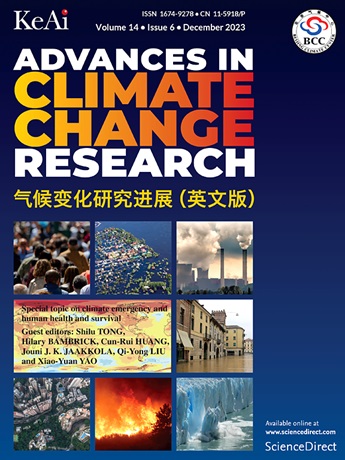Regional reallocation of zero-carbon ammonia production in China with carbon neutrality targets
IF 5.2
1区 地球科学
Q1 ENVIRONMENTAL SCIENCES
引用次数: 0
Abstract
Current studies have shown that local feedstocks such as coal, natural gas, and solar resources support regional industrial decarbonization pathways but fail to consider inter-regional cooperation. We employed the IPAC-technology model to develop a sub-national economic technological assessment model for the ammonia industry, incorporating commodity transportation costs to directly connect ammonia production locations. Our analysis indicates that carbon price is crucial for achieving zero carbon emissions across all regions. Xinjiang, Inner Mongolia, and Northwest China are likely to become electrolytic hydrogen-based ammonia production centers; Beijing‒Tianjin‒Hebei Region and Shandong are expected to develop nuclear hydrogen-based ammonia production; Southern China, Henan, and Shanxi are set to become hydrogen-based ammonia importer; and the Yangtze River Delta and Southwest China appear to have more varied development opportunities. Notably, while national CO2 emissions from ammonia sector decrease overall, emissions in Xinjiang, Inner Mongolia, and the Triangle of Central China are projected to increase in the near term. These findings provide valuable insights for policymakers and industry practitioners to develop decarbonization strategies and reallocation policies for China's ammonia industry.
基于碳中和目标的中国零碳氨生产区域再配置
目前的研究表明,煤炭、天然气和太阳能资源等当地原料支持区域工业脱碳途径,但未能考虑区域间的合作。我们采用ipac技术模型建立了氨气产业的次国家级经济技术评估模型,将商品运输成本纳入直接连接氨气生产地点。我们的分析表明,碳价格对于实现所有地区的零碳排放至关重要。新疆、内蒙古和西北地区有可能成为电解氢基氨生产中心;京津冀、山东有望发展核氢制氨;华南、河南和山西将成为氢基氨进口国;长三角和西南地区的发展机遇更加多样。值得注意的是,虽然全国氨行业的二氧化碳排放量总体下降,但预计新疆、内蒙古和华中三角地区的排放量近期将增加。这些研究结果为决策者和行业从业者制定中国氨行业的脱碳战略和再配置政策提供了有价值的见解。
本文章由计算机程序翻译,如有差异,请以英文原文为准。
求助全文
约1分钟内获得全文
求助全文
来源期刊

Advances in Climate Change Research
Earth and Planetary Sciences-Atmospheric Science
CiteScore
9.80
自引率
4.10%
发文量
424
审稿时长
107 days
期刊介绍:
Advances in Climate Change Research publishes scientific research and analyses on climate change and the interactions of climate change with society. This journal encompasses basic science and economic, social, and policy research, including studies on mitigation and adaptation to climate change.
Advances in Climate Change Research attempts to promote research in climate change and provide an impetus for the application of research achievements in numerous aspects, such as socioeconomic sustainable development, responses to the adaptation and mitigation of climate change, diplomatic negotiations of climate and environment policies, and the protection and exploitation of natural resources.
 求助内容:
求助内容: 应助结果提醒方式:
应助结果提醒方式:


